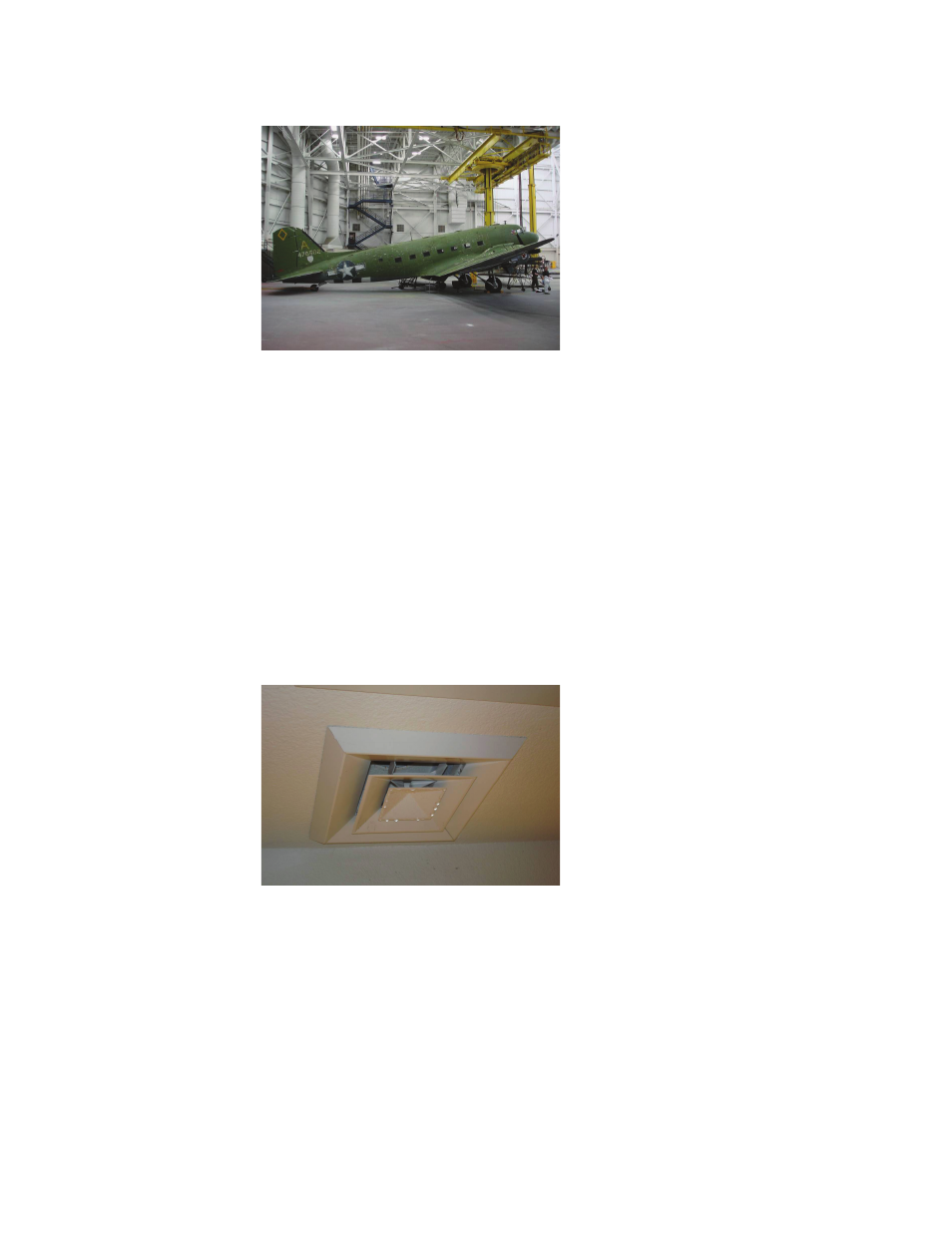Retrotec USACE User Manual
Page 158

D28 ENERGY & PROCESS ASSESSMENT PROTOCOL
D.2.2.6 Temperature Stratifi cation with Heating (Ineffi ciency)
Figure D46. Hangar with high supply air
discharge has signifi cant temperature
stratifi cation.
A comfortable temperature is typically not needed above 2.4 m (8 ft) from
the fl oor. In spaces with high ceilings, usually at or above 3.7 m (12 ft) (e.g.,
Figure D46), supply air diffusers can be installed 2.4–3 m (8–10 ft) above the
fl oor. This approach stratifi es the conditioned space such that the air above the
supply air diffusers is not conditioned. Energy usage is reduced by not provid-
ing air-conditioning or heating to the unoccupied spaces.
D.2.2.7 Temperature Setting Is below the Dew Point (Waste)
Low temperature settings result in cooling energy waste, uncomfortable con-
ditions for inhabitants, and moisture condensation on cold surfaces, causing
mold and mildew problems.
D.2.2.8 Ineffi cient Dehumidifi cation Systems (Ineffi ciency)
Figure D47. Thermostat settings and room
temperatures at 18.3 °C (65 °F) with the
outside dew point temperature 19.4 °C
(67 °F).
Supplying nearly saturated 12.8 °C (55 °F) air into a humid space results in
condensation in the spaces, which can lead to mold and mildew problems
(Figure D47). Electric or hot water reheat systems are sometimes employed
to decrease the RH of the supply air to the spaces to reduce the potential for
condensation, but these systems are typically turned off in the fi eld to reduce
energy use.
Ineffi cient air dehumidifi cation results in signifi cant repair and mainte-
nance costs. The cost of mold remediation outweighs the total fi rst cost of the
